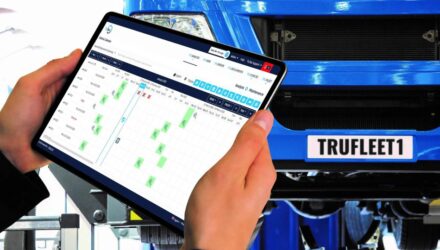It will not come as a surprise to many business owners and fleet managers that insurance is the third biggest component of a fleet’s total cost of ownership (TCO). Any changes in this industry will have a noticeable impact on the total fleet spend businesses make. Some of the most disruptive trends in recent decades include globalisation, digitisation and the latest being the internet-of-things (IoT).
With such substantial changes occurring, it is rather unusual that not much has been written about fleet insurance to date. There are some worldly parallels that exist within the larger insurance sector, although it is important to highlight the very specific trends that are reshaping this industry at this moment in time. There are five important trends that will have a sizeable impact on your fleet insurance premium in the years ahead, we have identified these below:
New mobility solutions will require usage-based pricing
The world as we know it is becoming more urbanised each year, leading city centres to become congested even more than they currently are. As a result, new forms of mobility are on the rise, for example: car sharing. As for fleet considerations, more and more businesses are looking to pool their company vehicles by offering drivers a mobility budget or cars on demand.
In the longer term, this ultimately means that vehicles may not drive insurance premium pricing. As an alternative, the way in which a vehicle is used will determine fleet costs e.g. annual mileage, location, user etc. This is where the usage-based pricing model could be one solution for fleet insurers.
Renewed focus by fleet insurers on driver behaviour and safety
Over the past 25 years, bodily injuries, fatalities, and the number of car accidents has been falling steadily. This is primarily due to governmental policies and campaigns driving this change. In recent years, fleet costs have been attempted to be controlled as owners and managers are taking a renewed focus on drivers. As a result of this, the next frontier in fleet management is likely to be influencing a driver’s behaviour, whether it be an employee or contractor. Driver safety programmes as an active prevention method are already being widely adopted, in turn reducing the total premium cost.
Advanced fleet technology for Improved driver support and vehicle insight
Telematics have been around for many years now and are also used in standard car insurance to encourage safer driving to reduce policy prices. Additionally, built-in-driver support e.g. lane assist, adaptive cruise control and autonomous emergency braking will offer a whole new level of assistance and connectivity through automation when on the road.
These innovative technologies also allow for comprehensive data collection and reporting. When combined with active prevention initiatives, this will be extremely important to achieving company safety targets. As years of optimisation have taught us, whatever can be measured can be improved. As we look towards the more distant future, autonomous driving is expected to lead the charge in a sharp premium reduction across the sector. It is worth noting that this is still some while away as a substantial percentage of traffic must become autonomous for this to happen.
Accident management and claims handling within fleet insurance
Medical, legal, and spare parts costs resulting from accidents will be subject to enormous inflation. This will likely result in an impact on fleet insurance costs in the long term. Cost control will be a key topic of discussion for both the insurer and the insured alike. What this means is that detailed reporting systems, effective claims handling and optimised accident management will become even more important in the fleet insurance industry.
Fleet insurance premiums will be impacted by stricter regulations
In 2016, new European regulation came into effect. This was done to further regulate the insurance industry. For example, the Solvency 2 directive stipulates the minimum capital requirements based on the risk insurance companies carry. As a result of this, more complex pricing models are required to be adopted. It is now imperative that the industry takes advantage of advanced analytics through data mining. As far as fleet insurance is concerned, the impact will be seen where cross subsidisation takes place e.g. other types of insurance with fleet cover. This will mean that these subsidies will gradually disappear in the future.
How can businesses reliant on fleet insurance prepare for these changes?
Eventually, these global trends will impact how your company manages fleet cover. To minimise costs and increase your risk management, your company should implement technology that monitors a driver’s behaviour and improves and encourages road safety. Advanced reporting will easily help you identify ‘high risk’ drivers. New mobility solutions offer more usage-based types of fleet management solutions.
Some see fleet insurance as risk, others see it as a cost. Although, both approaches are in fact relevant. Now is a great time to assess and review your fleet risk management and insurance.


















